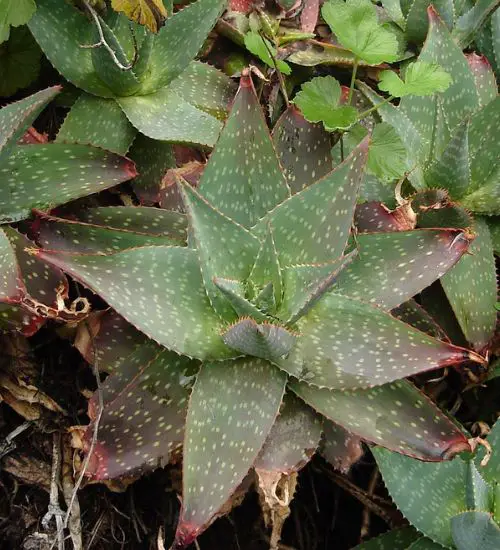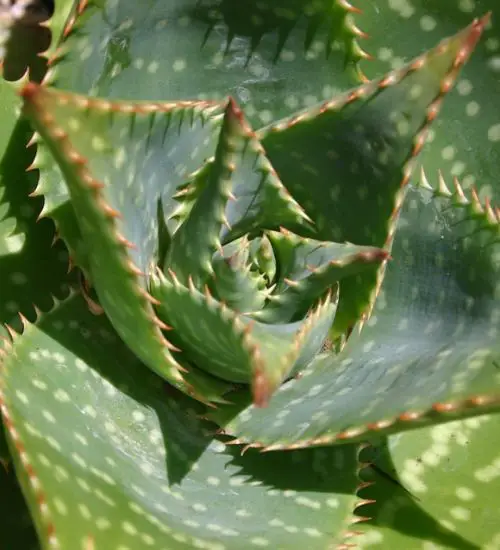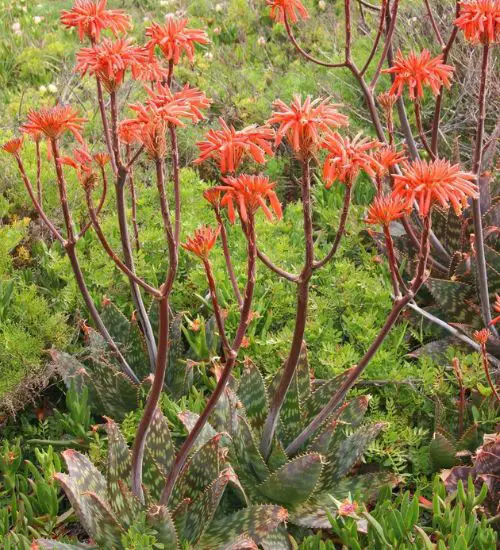Sun: Full sun to light shade
Water: Typical water needs for a succulent
Temperature: Zone 8a from 10° F to 15° F (-12.2 ° C to -9.4° C) to Zone 12b from 55° F to 60° F (12.8° C to 15.6° C)
Winter Survival: Cold hardy
Propagation: stem cuttings, seeds
Flower: in the summer, in the Winter.
Flower Type: Red, Yellow, Orange
Toxic: Generally non-toxic to humans and animals
Dormant: winter
Space Requirement: Indoors & Outdoors
Common Problems: pests
Where to buy Aloe maculata?
Basc Care for Aloe maculata
Watering
Watering for Aloe maculata is a simple task. It requires Typical water needs for a succulent.
One simple tip for you is that you can use some online apps to check the soil status before you go water your succulents. I would recommend the ThePlantsCheck app, it has some nice features there.
Fertilizing
Only feed this succulent during its active growing seasons which means winter. Use the right fertilizer applied in the right amounts. Applying half-strength balanced fertilizer every month or so is recommended for optimal results.
Do not fertilize during winter as the plant is dormant.
Sun & Location Requirements for "Aloe saponaria, the soap aloe or zebra aloe"
When giving Aloe maculata its ideal environment, remember to provide it with full sun to light shade. This means that it should receive at least 6 hours of direct sunlight each day, with no more than 5 hours of shade during the hottest portions of the day.
As per this succulent profile, it is only able to stay healthy when the environment temperature is above the range of zone 8a from 10° F to 15° F (-12.2 ° C to -9.4° C).
Aloe maculata is a member of the Aloe family and is known for being cold hardy. It is able to survive temperatures down to 0°F, making it an ideal choice for areas with cold winters. The succulent's thick leaves and stems help retain moisture in its cells, allowing it to survive through frigid temperatures. Additionally, the colorful foliage of "Aloe saponaria, the soap aloe or zebra aloe" adds a festive touch to any garden in cold areas.
Any succulents in the group will need a medium space to grow. You can place your pot at your table or window. Since this plant needs more space than mini succulents, you should consider do not plant them together with other succulents/plants.
Aloe maculata also benefits from some indirect light throughout the day as well, so make sure you give it enough space to soak up light without becoming too exposed to heat.
Propagation
Propagating Aloe maculata by stem cuttings is an easy and fun way to increase your collection of these unique houseplants. When propagating, it’s important to choose healthy stems from existing plants that are at least two inches long and have several leaves attached.
Growing Aloe maculata from seeds is an easy and economical way to produce more plants. Identify a healthy seed by its plumpness, dark color and slightly sticky texture. Once the potting mix has been pre-mixed with well-draining soil, sow the seeds evenly and press lightly into the surface. To ensure germination, keep the container in bright but indirect light and mist the soil gently with a spray bottle.
Toxicity

Aloe maculata is not known to pose any significant health risks, as it is not considered to be toxic. However, it is best to keep the plant away from young children and pets, as they may ingest some of the parts of this plant that could contain toxins which can cause mild skin irritation.
Pests and Diseases
Aloe maculata can be affected common pests and diseases like most of the other succulents such as mealybugs and scale insects.
If you do spot any of pest signs, you can treat your succulent using below methods.
- Mealybugs: quarantine, clean infected plants, soapy water.
- Scale insects: quarantine, clean infected plants, soapy water.
Besides that, to prevent serious health issues from happening, keep your succulent in a well-ventilated area and check it regularly for any signs of pests or health problems.


